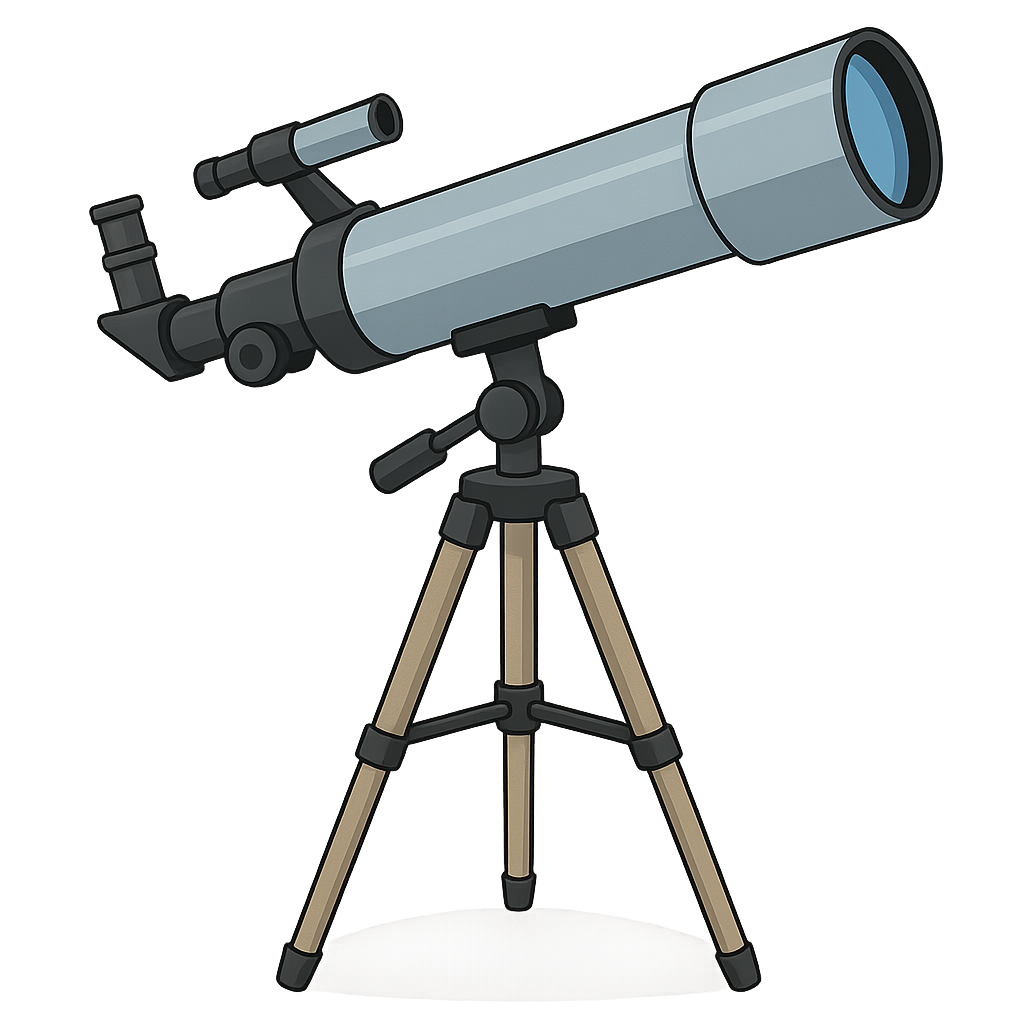The Telescope's Tale
Hello, I'm the Telescope! Have you ever looked up at the big, dark night sky and wished you could see the stars and the Moon up close? For a very, very long time, people could only look up and wonder what those tiny, twinkling lights really were. They looked like little diamonds scattered on a dark blanket, but no one could see them clearly. They were a beautiful mystery. That is, until I was born. I am a telescope, and I am here to tell you my story, which is the story of how humans began to explore the universe from their own backyards.
My story begins a long time ago, in a windy country called the Netherlands, way back in the year 1608. In a little shop filled with bits of glass, a man who made eyeglasses named Hans Lipperhey was working. He made special curved glass, called lenses, that helped people see things more clearly. One day, he playfully held up two different lenses, one in front of the other. When he peeked through them, something incredible happened! The weather vane on a faraway church steeple suddenly looked huge and close, as if he could reach out and touch it. What a surprise! He realized he had discovered something amazing. So, he built a tube to hold the two lenses in just the right spot, and poof! The first version of me was born. He called me a 'spyglass,' and people used me to see ships far out at sea or other things far away on land.
Word about this new spyglass traveled quickly across Europe. Soon, a very clever and curious man in Italy named Galileo Galilei heard about me. Galileo was a thinker and a star-gazer. He thought, 'Everyone is using this spyglass to look at things on Earth. What would happen if I pointed it at the sky?' It was a brilliant idea that would change the world! So, in 1609, he built his own version of me, but he made me much stronger and more powerful than the first one. One clear night, he aimed me toward the glowing Moon. He gasped! Instead of a smooth, silvery ball, he saw a world full of shadows, mountains, and big round pits called craters. It looked a lot like Earth! He was the first person to ever see the Moon like that. But he didn't stop there. He turned me toward the bright planet Jupiter and discovered four tiny moons dancing around it, like little fireflies. It was a secret of the universe that I helped him uncover for the very first time.
After Galileo's amazing discoveries, everything changed. People realized the night sky wasn't just a ceiling with little lights on it. It was a huge, amazing place filled with other worlds and wonders. Seeing the Moon's mountains and Jupiter's moons made people ask more questions. What else was out there? Were there other planets with moons? This curiosity made them dream bigger dreams about exploring the cosmos. Over the years, very clever scientists and engineers built bigger and more powerful versions of me. I grew from a small tube into a giant machine that could see things Galileo never even imagined. I could peer past the planets to see swirling, colorful clouds of gas where new stars were being born, and even whole families of stars called galaxies, which are so far away their light takes millions of years to reach us.
Today, my family is bigger and more amazing than ever. Some of my relatives are enormous telescopes that live on top of high mountains, where the air is clear and they can get a perfect view of the stars. Some of my most famous family members, like the Hubble Space Telescope and the James Webb Space Telescope, don't even live on Earth! They fly high above the clouds, deep in space, taking incredible pictures of distant galaxies and mysterious planets. From a simple spyglass in a glasses shop to a powerful eye in space, I am still helping curious kids and scientists everywhere look up and discover the secrets of the universe. I am a tool for wonder, and I hope my story makes you wonder, too.
Reading Comprehension Questions
Click to see answer
